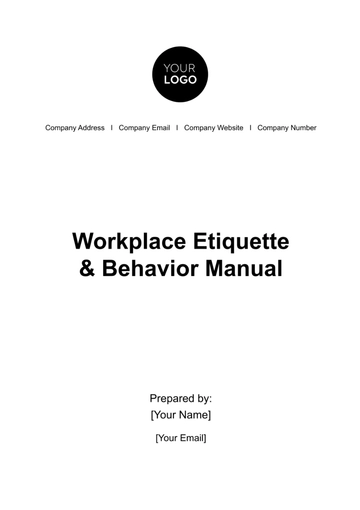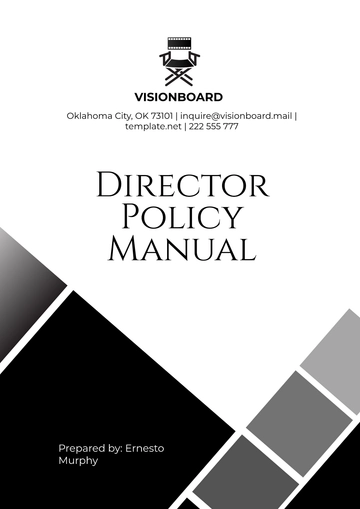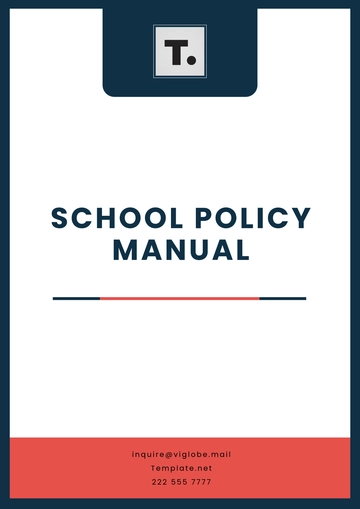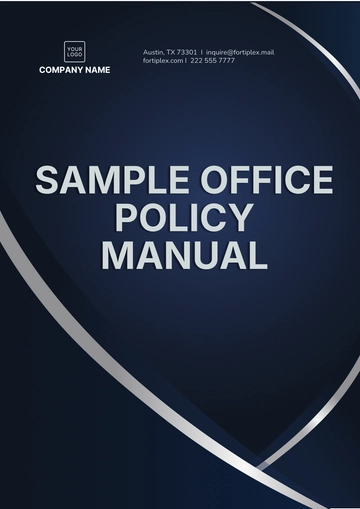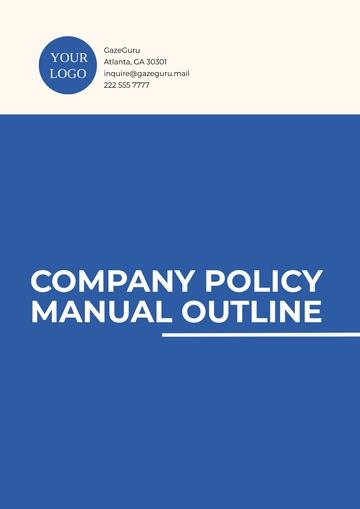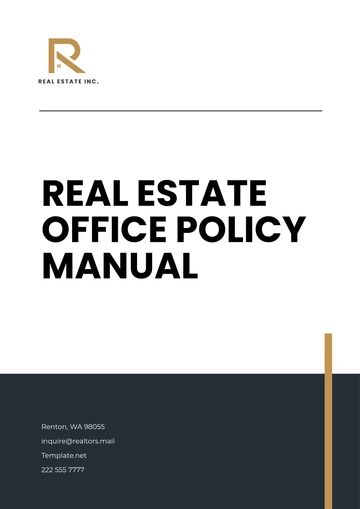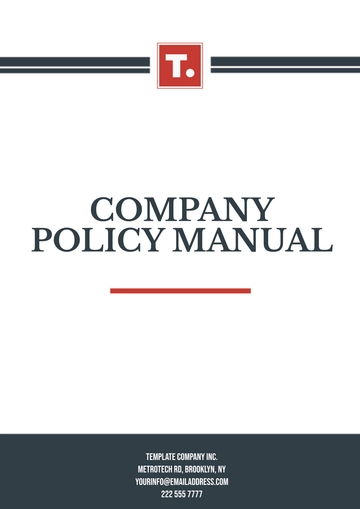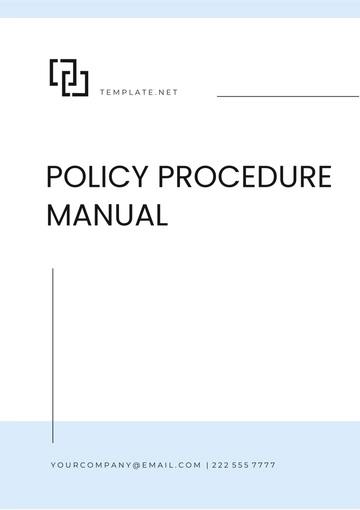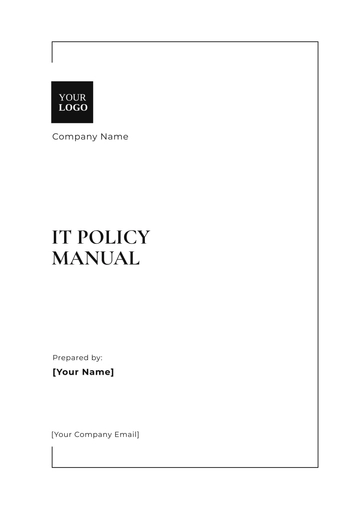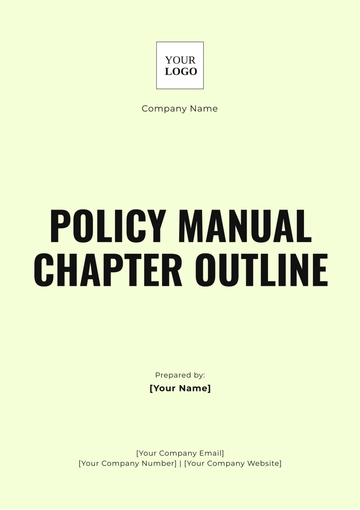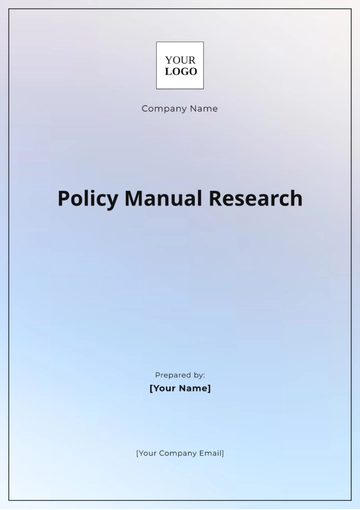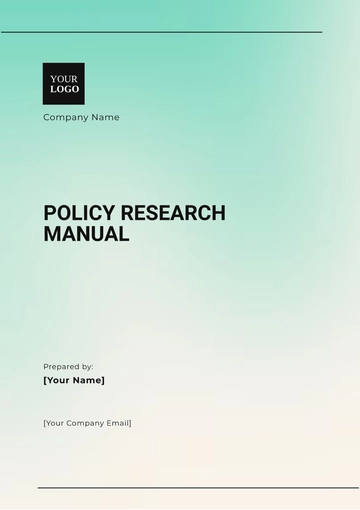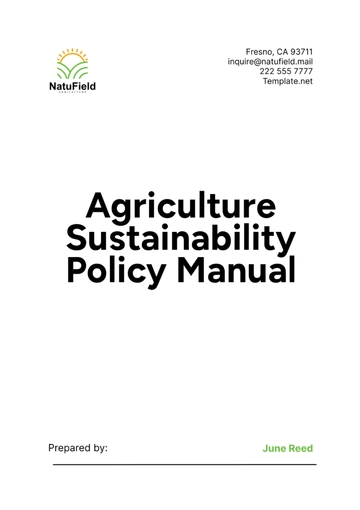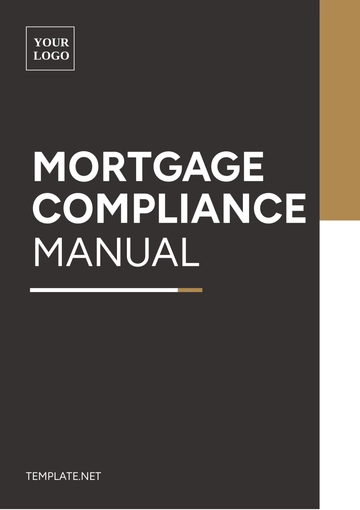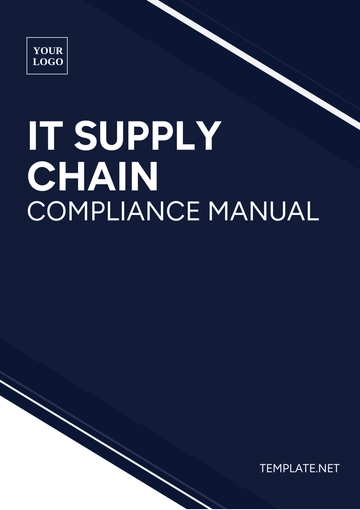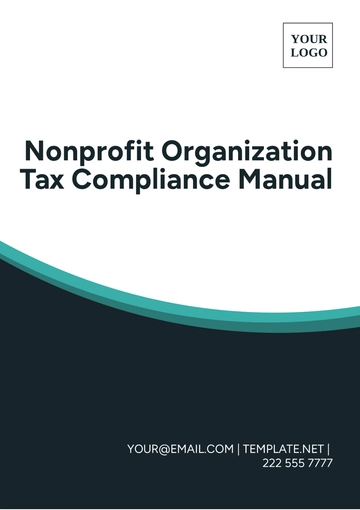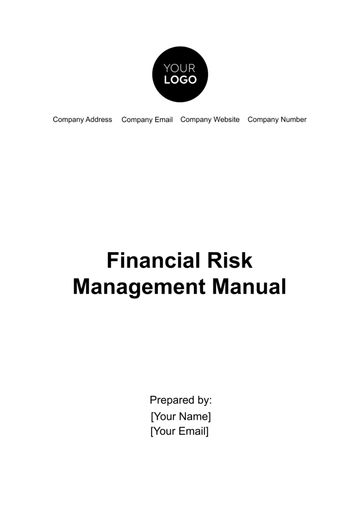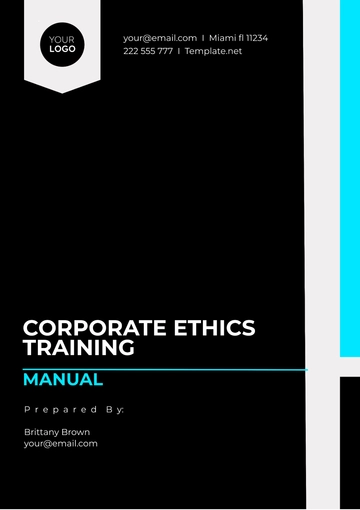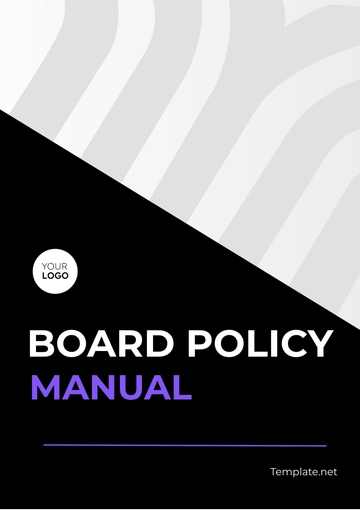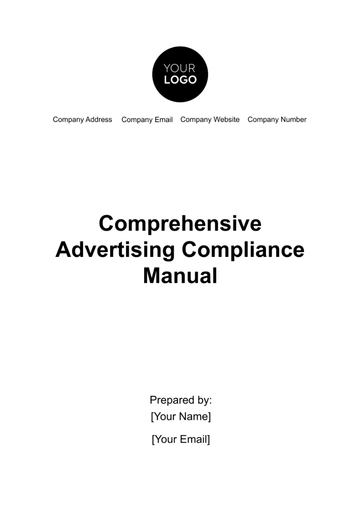Free Accounts Risk Management Manual
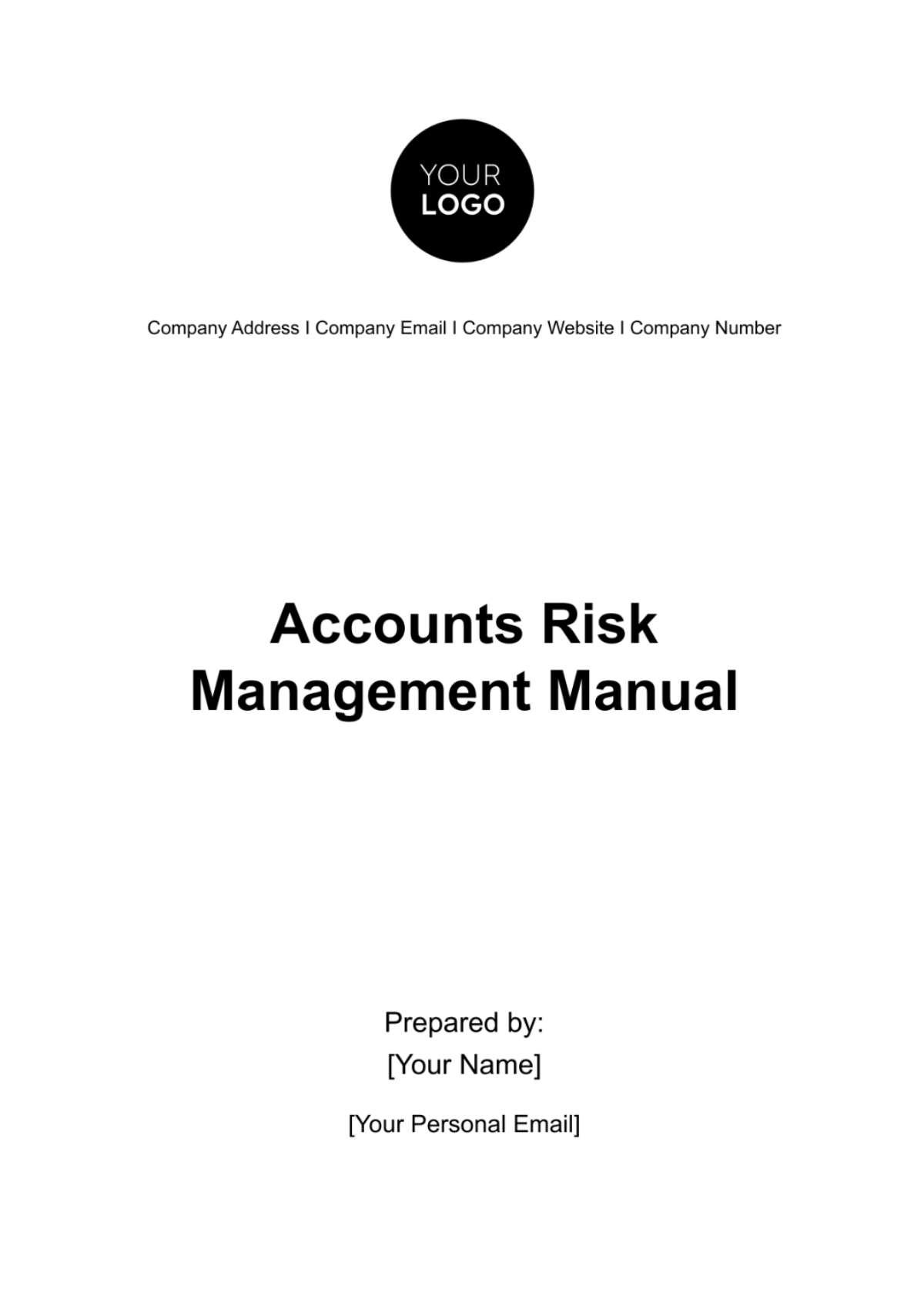
I. Executive Summary
A. Introduction
Welcome to the Accounts Risk Management Manual of [Your Company Name]. In an ever-evolving financial landscape, this manual serves as a compass for navigating the complexities of risk associated with our financial accounts. It establishes a foundation for fostering a culture of vigilance, ensuring that our organization remains resilient in the face of uncertainties. By providing comprehensive insights into risk identification, assessment, and mitigation, this manual empowers stakeholders to make informed decisions and contribute to the sustainable financial health of our organization.
B. Purpose of the Manual
This manual is a strategic roadmap designed to systematically address the multifaceted challenges posed by financial risk. Its purpose is to articulate a unified approach towards identifying, evaluating, and managing risks associated with our diverse range of financial accounts. By instilling a shared understanding of risk management principles, the manual aims to enhance organizational agility and responsiveness to dynamic market conditions, ultimately safeguarding our financial stability.
C. Key Objectives
Holistic Risk Understanding: Foster a comprehensive understanding of risks associated with financial accounts, ensuring that all stakeholders grasp the intricate interplay of credit, market, operational, liquidity, legal, and reputational risks.
Proactive Risk Mitigation: Equip the organization with tools and strategies to proactively mitigate risks, emphasizing the importance of early detection and intervention to minimize potential negative impacts.
Compliance Excellence: Establish and maintain a culture of strict adherence to financial regulations and industry standards, positioning the organization as a paragon of compliance in the financial landscape.
Strategic Resilience: Enhance the organization's overall financial resilience by aligning risk management strategies with broader strategic objectives, fortifying our ability to navigate challenges and seize opportunities.
D. Overview of the Organization's Risk Management Framework
Our risk management framework integrates seamlessly into the organization's strategic planning and decision-making processes. Governed by a robust structure, it encompasses risk identification, assessment, mitigation, and continuous monitoring. Collaborative efforts between the Chief Risk Officer, Risk Management Team, and various departments ensure that our framework adapts dynamically to evolving market conditions and regulatory landscapes, positioning us at the forefront of responsible financial management.
II. Risk Management Governance
A. Roles and Responsibilities
1. Chief Risk Officer (CRO)
As the custodian of our risk management strategy, the CRO oversees the entire risk landscape, setting the tone for risk-conscious decision-making. Responsibilities include the development of risk management policies, communication of risk appetite, and regular reporting to senior management and the board.
2. Risk Management Team
The Risk Management Team, comprised of seasoned professionals, collaborates across departments to identify, assess, and manage risks. They leverage their expertise to develop risk models, analyze data, and recommend risk mitigation strategies tailored to our organization's unique financial profile.
3. Finance Department
Playing a pivotal role in risk management, the Finance Department contributes valuable insights into credit risk, market dynamics, and financial decision-making. Their collaboration with the Risk Management Team ensures that financial strategies align with risk management objectives.
4. Compliance Officers
Compliance Officers diligently monitor and ensure adherence to financial regulations and industry standards. Their role involves conducting regular assessments of compliance processes, reporting any deviations, and advising on measures to align our practices with regulatory expectations.
5. Legal Department
The Legal Department reviews contracts, agreements, and transactions to identify legal risks, ensuring that our financial activities align with applicable laws. Their proactive involvement in risk mitigation strategies contributes to a robust legal framework that safeguards the organization's interests.
B. Organizational Structure for Risk Management
1. Reporting Lines
Clear reporting lines facilitate effective communication and collaboration within the risk management structure. The Risk Management Team reports directly to the CRO, creating a streamlined flow of information and ensuring that risk considerations are integrated into decision-making processes across the organization.
2. Communication Protocols
Open communication protocols enable timely sharing of risk-related information between departments. Regular meetings, risk briefings, and reporting mechanisms are established to facilitate a proactive exchange of insights, ensuring that risk considerations are woven into the fabric of our organizational culture.
III. Risk Identification
A. Types of Risks
1. Credit Risk
Credit risk, a cornerstone of our risk landscape, refers to the potential loss arising from borrowers' inability to meet financial obligations. This includes thorough assessments of counterparty creditworthiness, diversified lending portfolios, and continuous monitoring to identify early signs of credit deterioration.
2. Market Risk
Market risk encompasses potential financial losses due to changes in market prices. We systematically analyze interest rate risk, foreign exchange risk, and commodity price fluctuations, employing risk models to anticipate market movements and inform strategic decision-making.
3. Operational Risk
Operational risk, inherent in our day-to-day operations, is diligently managed through comprehensive internal processes and systems. Regular audits, robust IT infrastructure, and contingency planning are integral components, ensuring operational resilience and minimizing the impact of unforeseen events.
4. Liquidity Risk
Liquidity risk mitigation strategies focus on maintaining sufficient liquid assets to meet short-term obligations. Stress testing scenarios, coupled with diversified funding sources, form the basis for our liquidity risk management framework, fortifying our ability to navigate varying market conditions.
5. Legal and Regulatory Risks
Legal and regulatory risks are systematically addressed through collaboration between the Legal Department and Compliance Officers. Our proactive approach includes regular reviews of legal documentation, monitoring changes in regulations, and implementing measures to align our practices with evolving legal and regulatory landscapes.
6. Reputational Risk
Reputational risk is managed through transparent communication, ethical business practices, and a commitment to corporate social responsibility. Our emphasis on maintaining a positive public image extends across all business activities, contributing to the preservation of our reputation.
B. Risk Identification Methods
1. Risk Registers
Our risk register is a dynamic tool categorizing identified risks, their sources, and potential impacts. Regularly updated and accessible to relevant stakeholders, it serves as a centralized repository for ongoing risk assessment and management.
Risk ID | Risk Category | Source of Risk | Potential Impact |
|---|---|---|---|
R001 | Credit Risk | Loan Portfolio | Financial Loss |
R002 | Market Risk | Interest Rates | Portfolio Value |
R003 | Operational Risk | IT Systems Failure | Disruption of Operations |
2. Scenario Analysis
Scenario analysis allows us to assess potential impacts of specific events on financial accounts. By simulating various scenarios, we gain insights into potential outcomes, enabling us to formulate proactive strategies to address emerging risks.
3. Historical Data Analysis
Historical data analysis involves the examination of past events and trends to identify patterns and anticipate future risks. By learning from historical experiences, we enhance our ability to make informed decisions and mitigate risks effectively.
4. External Risk Indicators
External risk indicators, such as economic indicators and industry trends, play a crucial role in risk identification. Regular monitoring of external factors enhances our ability to anticipate changes in the business environment and adjust our risk management strategies accordingly.
IV. Risk Assessment
A. Risk Severity and Likelihood Assessment
1. Risk Scoring Criteria
Our risk scoring criteria evaluate the severity and likelihood of identified risks on a scale that enables a nuanced understanding of their potential impact. The criteria consider financial, operational, and reputational implications, ensuring a comprehensive assessment that guides prioritization and mitigation efforts effectively.
2. Risk Matrix
A risk matrix visually represents the interplay between the severity and likelihood of risks, providing a clear and concise overview. This matrix guides decision-makers in determining the appropriate level of attention and resources to allocate for managing specific risks, fostering a risk-aware culture within the organization.
B. Risk Appetite and Tolerance
1. Definition
Our risk appetite defines the level of risk the organization is willing to accept in pursuit of its strategic objectives. It reflects a balanced approach that acknowledges the necessity of taking risks while maintaining a commitment to responsible and sustainable financial management.
2. Determination Process
The determination of risk appetite involves a collaborative effort between senior management, the Risk Management Team, and other key stakeholders. Regular assessments ensure alignment with organizational goals and market conditions, providing flexibility to adapt to evolving risk landscapes.
3. Monitoring and Reporting on Risk Appetite
Monitoring and reporting mechanisms are in place to track adherence to established risk appetite levels. Regular updates to senior management and the board ensure ongoing alignment with strategic objectives and facilitate timely adjustments based on changing business environments.
V. Risk Monitoring and Measurement
A. Key Risk Indicators (KRIs)
Key Risk Indicators (KRIs) serve as early warning signals, providing a quantitative and qualitative assessment of potential risk exposure. Tailored to each type of risk, KRIs are monitored continuously, triggering proactive responses to emerging threats and enabling timely risk mitigation strategies.
B. Thresholds and Triggers
Defined thresholds and triggers complement our risk monitoring framework. These predetermined levels, based on historical analysis and risk appetite considerations, guide the escalation of risk management responses, ensuring swift action when risks approach or exceed acceptable limits.
C. Monitoring Frequency
The frequency of risk monitoring is tailored to the nature of the risk. While some risks require continuous monitoring, others are assessed periodically. This adaptive approach ensures that our risk monitoring processes remain dynamic and responsive to changing conditions.
D. Reporting Mechanisms
Comprehensive reporting mechanisms facilitate the timely communication of risk-related information. Regular reports, dashboards, and real-time alerts are employed to keep stakeholders informed, promoting a proactive approach to risk management across all organizational levels.
VI. Risk Mitigation Strategies
A. Control Measures
1. Internal Controls
Robust internal controls are implemented to mitigate operational and financial risks. These controls are regularly reviewed and updated to align with emerging risks, fostering a culture of accountability and ensuring the effectiveness of our risk management framework.
2. Policies and Procedures
Detailed policies and procedures guide employees in adhering to risk management protocols. Clear guidelines are established for decision-making, ensuring consistency and aligning individual actions with the broader risk management objectives of the organization.
3. Technology Solutions
Cutting-edge technology solutions, including risk management software and analytics tools, complement our manual processes. These solutions enhance our ability to collect and analyze data, providing actionable insights for timely decision-making and risk mitigation.
B. Diversification Strategies
Strategic diversification of our financial portfolios is a cornerstone of our risk mitigation approach. By spreading risk across different asset classes and geographic regions, we aim to minimize the impact of adverse market conditions on our overall financial health.
C. Insurance and Hedging
Insurance and hedging mechanisms are employed to transfer and manage certain types of risks. These strategies are carefully selected based on the specific risk profiles of our financial accounts, providing an additional layer of protection against unforeseen events.
D. Contingency Planning
Comprehensive contingency plans are developed for potential scenarios identified through risk assessment. These plans outline predefined responses and alternative courses of action, ensuring a swift and coordinated organizational response in the event of a risk materializing.
VII. Compliance and Regulatory Considerations
A. Overview of Applicable Regulations
Our organization operates within a complex regulatory environment. This section provides a comprehensive overview of the relevant financial regulations and industry standards that impact our financial accounts. Regular updates are conducted to ensure ongoing compliance with evolving regulatory requirements.
B. Compliance Monitoring Processes
A robust compliance monitoring framework is in place to systematically track adherence to regulatory requirements. Compliance officers conduct regular assessments, internal audits, and reviews to identify any deviations and ensure that corrective actions are promptly taken to align with regulatory expectations.
C. Regulatory Reporting Protocols
Clear protocols for regulatory reporting are established to ensure timely and accurate submissions. These protocols outline the responsibilities of different departments in preparing and submitting required reports, fostering a culture of transparency and accountability in regulatory compliance.
D. Interaction with Regulatory Bodies
Open lines of communication are maintained with regulatory bodies. Regular dialogues, participation in industry forums, and proactive engagement with regulatory updates help us stay informed about changes in the regulatory landscape, allowing us to adapt our risk management strategies accordingly.
VIII. Reporting and Communication
A. Internal Reporting
1. Regular Reports to Management
Regular reports, detailing the current risk landscape, are provided to senior management. These reports include updates on key risk indicators, risk mitigation strategies, and any emerging risks that require attention. The goal is to empower decision-makers with timely and relevant information for effective risk management.
2. Board Reporting
Periodic reports are submitted to the board of directors, summarizing the organization's overall risk exposure, risk mitigation efforts, and adherence to risk appetite thresholds. These reports facilitate informed board discussions and strategic decision-making.
3. Communication Protocols
Efficient communication protocols ensure that risk-related information is disseminated promptly across the organization. Clear channels of communication, including meetings, memos, and digital platforms, are established to encourage open dialogue and transparency regarding risk matters.
B. External Reporting
1. Shareholder Communication
Transparent communication with shareholders is a priority. Annual reports and shareholder communications include a comprehensive overview of the organization's risk management practices, providing stakeholders with insights into how risks are identified, assessed, and managed.
2. Regulatory Filings
Timely and accurate regulatory filings are a crucial aspect of our external reporting. Compliance officers work closely with legal and finance teams to ensure that all required filings are prepared and submitted within the specified timelines, maintaining our commitment to regulatory compliance.
IX. Training and Awareness
A. Employee Training Programs
Structured employee training programs are conducted to enhance awareness of risk management principles. Training modules cover key risk areas, reporting procedures, and the role of each employee in contributing to the organization's risk-aware culture.
B. Stakeholder Awareness Initiatives
Beyond internal training, awareness initiatives extend to external stakeholders, including clients, partners, and suppliers. This proactive approach fosters a shared understanding of our commitment to sound risk management practices, building trust and credibility in the broader business community.
C. Training Effectiveness Assessment
The effectiveness of training programs is regularly assessed through feedback mechanisms, quizzes, and evaluations. Continuous improvement strategies are implemented based on these assessments to ensure that employees remain well-informed and equipped to contribute to our risk management objectives.
X. Review and Update Procedures
A. Frequency of Reviews
Regular reviews of the Accounts Risk Management Manual are conducted at predefined intervals. These reviews ensure that the manual remains current and relevant, reflecting changes in the organization's risk profile, market conditions, and regulatory requirements.
B. Process for Manual Updates
A structured process for manual updates is in place. Proposed updates undergo thorough review by the risk management team, legal, compliance, and other relevant departments before approval. Clear documentation of changes is maintained for transparency and accountability.
C. Lessons Learned from Previous Incidents
The manual incorporates a section dedicated to lessons learned from previous risk incidents. This reflective analysis helps in refining risk management strategies, improving processes, and preventing the recurrence of similar incidents.
XI. Documentation and Record Keeping
A. Documenting Risk Assessments and Mitigation Plans
Comprehensive documentation is maintained for all risk assessments and mitigation plans. This documentation includes detailed records of risk identification, assessments, chosen mitigation strategies, and the rationale behind decision-making processes.
B. Record Keeping Protocols
Clear protocols for record-keeping ensure the secure storage and accessibility of risk-related documents. These protocols comply with data security and confidentiality standards, protecting sensitive information and ensuring its availability for audits and regulatory examinations.
C. Data Security and Confidentiality
Stringent measures are in place to safeguard the confidentiality and integrity of risk-related data. Access controls, encryption methods, and secure storage practices are employed to protect sensitive information from unauthorized access or disclosure.
- 100% Customizable, free editor
- Access 1 Million+ Templates, photo’s & graphics
- Download or share as a template
- Click and replace photos, graphics, text, backgrounds
- Resize, crop, AI write & more
- Access advanced editor
Discover unparalleled risk management with the Accounts Risk Management Manual Template on Template.net. This editable and customizable resource, powered by an intuitive AI Editor Tool, provides a comprehensive framework. Crafted for financial resilience, it ensures easy adaptation to your organization's needs. Elevate your risk strategy effortlessly with this dynamic template, available exclusively on Template.net.


